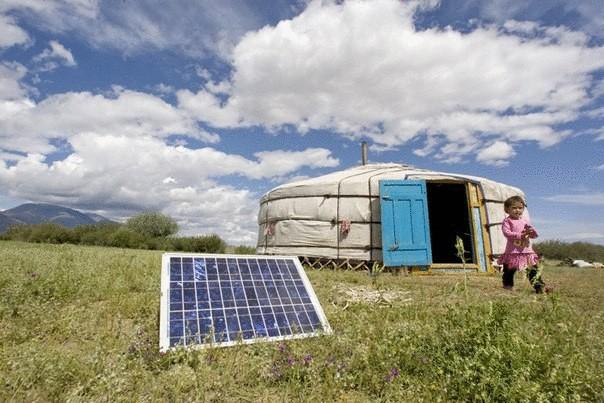430
Solar power for nomads of Mongolia

Portable solar panels help the nomads of Mongolia as not to disrupt their way of life.
About 800 thousand inhabitants of Mongolia's 2.8 million residents still live a traditional nomadic lifestyle that has remained virtually unchanged for many generations. In addition to motorcycles, diesel generator and random trade with a fearless tourists wishing to stay in a Yurt for the night, the lives of many nomads almost the same as their grandfathers and great grandfathers. Now in the desert you can see the glare of sunshine from the solar panels that are installed on the sides of the Yurt made of felt and Yak. In the beginning of this Millennium, the shepherds and nomads of Mongolia had little or no access to modern electricity and its potential.

But in 2013, thanks to the initiative of the Mongolian government, almost 70 percent of nomadic people have access to electricity. Bor, the shepherd, mostly roams in Western Mongolia and in the province of Arhangay, is one of those people whose family felt the benefits from portable solar home systems.
"We use it to generate energy for lighting in the tent, charging phones, we can also include the fridge for longer storage of food, and we can turn on the TV. This is very useful for us because we can get the most recent weather forecast, which is important for our work and maintain our animals safe. Before, it was very difficult. Now it's almost like living in the city."

Access to electricity also allows families to contact emergency health service and to consult with your doctor without making the often difficult journey to the nearest town or village.
The ability to charge mobile phones is also important for shepherds, who often have children living in boarding schools during their nomadic ways.
"The majority of children from rural areas stay in hostels, because their parents are nomads and it is the only way they can get an education," said Bor.

Solar panels help travellers to preserve their way of life and not adapt to the traditional fixed grid, which stop their movement.
70% of herders reported "increasing productivity" as a result of access to electricity, and 90% had access to mobile communication.
Source: rodovid.me























